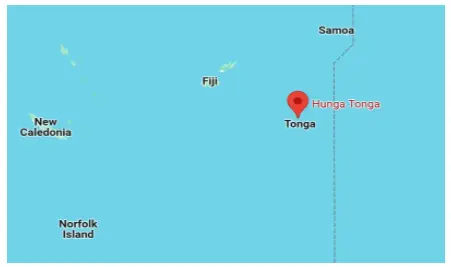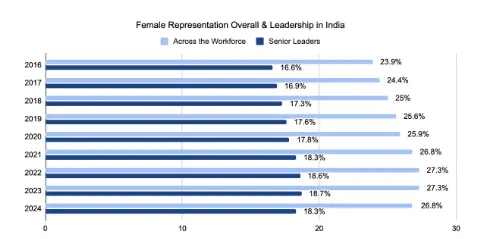Monday, 10th June 2024
Pakistan and China Agree to Upgrade CPEC
Why in the News ?
- Recently, Pakistan Prime Minister Shehbaz Sharif and Chinese President Xi Jinping in their meeting have affirmed consensus on the upgradation of the China-Pakistan Economic Corridor (CPEC) and advancing high-quality development of the multi-billion dollar project in the second phase.
About the China-Pakistan Economic Corridor (CPEC):
- During an April 2015 visit to Islamabad, Chinese President Xi Jinping and Pakistani PM Nawaz Sharif unveiled the $46 billion China-Pakistan Economic Corridor (CPEC).
- The CPEC is a 3,000-km long route, which connects Gwadar Port in Pakistan's Balochistan with China's Xinjiang province, is the flagship project of China's ambitious Belt and Road Initiative (BRI).
- CPEC quickly ballooned to $62 billion in pledges—one-fifth of Pakistan’s GDP—covering dozens of envisioned high-profile projects.
- It is a bilateral project between Pakistan and China, intended to promote connectivity across Pakistan with a network of highways, railways, and pipelines accompanied by energy, industrial, and other infrastructure development projects.
- It will pave the way for China to access the Middle East and Africa from Gwadar Port, enabling China to access the Indian Ocean and in return China will support development projects in Pakistan to overcome the latter’s energy crises and stabilising its faltering economy.
What are the different phases of CPEC?
- First Phase
- In the first phase various agreements such as energy, infrastructure, port development and the railway line construction have been signed under the first phase of this project.
- According to the CPEC website, of the 21 proposed power projects, 14 have been completed, two are under construction, and five are yet to start.
- Of the 24 proposed transport-related projects (rail and road), six have been completed, but no work has started on 13.
- According to the official Chinese news agency Xinhua, CPEC had brought direct investment of $25.4 billion to Pakistan until 2022.
- Second Phase
- In February 2022, during the visit of the Pakistani PM to China, an industrial cooperation agreement was signed.
- The second phase primarily revolves around Special Economic Zones development and industrialisation.
What are CPEC’s Implications for India?
- India’s Sovereignty:
- India staunchly opposes the CPEC due to its passage through Pakistan-occupied Kashmir's Gilgit-Baltistan region.
- This stance is rooted in India's sovereignty concerns, particularly regarding the Kashmir Valley.
- Despite local optimism within Jammu and Kashmir, there are apprehensions that a prosperous Gilgit-Baltistan under CPEC's success could strengthen Pakistan's territorial claims, undermining India's position over the region.
- Chinese Control Over Trade Via Sea:
- With CPEC operational, China could offer a more direct and cost-effective trade route for North and Latin American enterprises, bypassing the Panama Canal.
- This potential shift would grant China significant influence over international trade terms between the Atlantic and Pacific oceans, impacting major US ports dependent on the Panama Canal for trade with China.
- China's "String of Pearls":
- This strategy aims to encircle India through a network of airfields and ports in the Indian Ocean region.
- With control over ports like Chittagong, Hambantota, Port Sudan, and Gwadar, China seeks complete dominance in the Indian Ocean, alarming both American and Indian defence analysts.
- Emergence of Pakistan as an Outsourcing Destination:
- Its exports, particularly in textiles and construction materials, directly rival those of India in key markets like the US and UAE, significant for both nations.
- Simplified access to raw materials from China positions Pakistan to dominate regional markets, potentially impacting India's export volumes.
Stronger BRI and Chinese Dominance in Trade Leadership:
- The BRI aims to enhance connectivity across Eurasia through infrastructure networks, with projects like CPEC advancing this agenda.
- China's increasing integration into the global economy could bolster its influence in international forums like the United Nations, potentially challenging India's aspirations for a permanent seat on the UN Security Council.
Debt burden of Pakistan and role of China:
- China's Growing Hold on Pakistan's Debt:
- According to the International Monetary Fund (IMF), China's share of Pakistan's external debt has risen from $4 billion in 2013 to roughly $30 billion of the current $126 billion.
- Between July 2021 and March 2022, more than 80% of Pakistan's bilateral debt service payments went to Beijing.
- Concerns Over Debt Dependency:
- There are concerns both within and outside Pakistan that this debt burden is unsustainable and may turn Pakistan into a client state of China.
- Critics liken CPEC to a neo-colonial project, similar to the British East India Company’s control over the Indian Subcontinent.
- IMF’s Bailout Package and Debt Obligations:
- In March 2024, the IMF released a $1.1 billion tranche of a $3 billion bailout package to Pakistan.
- The government is negotiating a new package of $6-8 billion, but debt obligations to China are a major hurdle.
- Conditions for Further Assistance
- The IMF has stipulated that its resources should not be used to service Chinese debt.
- The IMF has indicated that any new agreement will require rescheduling the maturities of Chinese debt instruments due in the next three years to prevent a positive net outflow from Pakistan to China during the program period.
|
UPSC Civil Services Examination Previous Year Question (PYQ) Prelims Q:1 Belt and Road Initiative’ is sometimes mentioned in the news in the context of the affairs of (2016)
Ans: (d) Mains Q:1 The China-Pakistan Economic Corridor (CPEC) is viewed as a cardinal subset of China’s larger ‘One Belt One Road’ initiative. Give a brief description of CPEC and enumerate the reasons why India has distanced itself from the same. (2018) Q:2 China and Pakistan have entered into an agreement for the development of an economic corridor. What threat does this pose for India’s security? Critically examine. (2014) Q:3“China is using its economic relations and positive trade surplus as tools to develop potential military power status in Asia”. In the light of this statement, discuss its impact on India as her neighbour. (2017) |
Source: ET
Relooking India’s Neighborhood First Policy
Why in the News?
- Recently, as Prime Minister-elect Narendra Modi prepares to take oath for his third term, the focus is once again back on India's foreign policy and how it will take shape over the next five years.

About Neighborhood First Policy:
- India’s ‘Neighbourhood First 'policy officially came to being in 2008 which guides towards the management of relations with immediate neighbourhood countries, that is, Afghanistan, Bangladesh, Bhutan, Maldives, Myanmar, Nepal, Pakistan and SriLanka.
- Its objective is to enhance physical, digital and people to people connectivity across the region, as well as augmenting trade and commerce.
- The policy prioritises improving physical, digital, and people-to-people connectivity within the region, while also boosting trade and commerce.
Significance of the Policy:
- Countering Chinese influence:
- By collaborating closely with neighbouring countries like Sri Lanka, Maldives, and Bangladesh, India can counterbalance Chinese influence in the Indian Ocean region.
- Support in multilateral forums:
- India's partnership with neighbouring countries like Bangladesh, Sri Lanka, and Nepal strengthens its representation of Global South interests in international forums like the United Nations and the World Trade Organization, as evidenced in recent trade negotiations and climate change discussions.
- Ensuring territorial integrity:
- Collaborative efforts with neighbouring countries such as Bhutan and Myanmar contribute to India's efforts to safeguard its territorial integrity, exemplified by recent joint military exercises and border security agreements.
- Increasing maritime security:
- Enhanced cooperation with maritime neighbours like the Maldives and Mauritius reinforces India's maritime security posture, as demonstrated by joint patrols and intelligence sharing agreements aimed at countering piracy and illicit maritime activities.
- Addressing energy security:
- Strategic partnerships with energy-rich nations such as the United Arab Emirates and Qatar bolster India's energy security through recent agreements on oil and gas exploration, pipeline projects, and renewable energy initiatives.
- Bridging development deficits:
- India's engagement with neighbouring countries like Bangladesh and Nepal facilitates cross-border infrastructure projects and economic development initiatives, as evidenced by recent investments in connectivity infrastructure and joint development projects.
- Soft power diplomacy:
- Cultural exchanges and people-to-people ties with neighbouring countries like Sri Lanka, Bhutan, and Afghanistan enhance India's soft power influence in the region, as seen in recent cultural festivals, educational exchanges, and tourism initiatives.
Challenges Associated with the Policy:
- Geopolitical tensions:
- Recent border disputes between India and China, as well as political disagreements with Pakistan, have heightened geopolitical tensions in the region.
- Implementation issues:
- Logistical and bureaucratic challenges have hampered the execution of cross-border projects, as evidenced by delays in infrastructure development initiatives with Nepal and Bangladesh.
- Economic differences:
- Variations in economic development levels among neighbouring countries, such as the wide gap between India and Nepal's economies, pose challenges to achieving balanced and effective cooperation in the region.
Key major initiatives:
- Dialogue:
- India engages in vigorous regional diplomacy with neighbouring nations, exemplified by the invitation extended to all SAARC heads of government for the Prime Minister's oath-taking ceremony in 2014.
- Resolving bilateral issues:
- India emphasises resolving bilateral issues through mutual agreements, as demonstrated by the operationalization of the historic Land Boundary Agreement (LBA) with Bangladesh.
- Connectivity:
- India has signed MoUs with SAARC members to facilitate the free flow of resources, energy, goods, labour, and information across borders, promoting regional connectivity.
- Economic Cooperation:
- India focuses on enhancing trade ties with neighbours and invests in regional development through initiatives like the Bangladesh-Bhutan-India-Nepal (BBIN) grouping, particularly in energy development.
- Technical Cooperation:
- India emphasises technical cooperation, exemplified by the development of a dedicated SAARC satellite for sharing technology benefits like tele-medicine and e-learning across South Asia.
- Disaster management:
- India offers cooperation in disaster response, resource management, weather forecasting, and communication, providing assistance to neighbouring countries during disasters like the 2016 earthquake in Nepal.
- Military and defence cooperation:
- India deepens security in the region through military cooperation, conducting exercises like Surya Kiran with Nepal and Sampriti with Bangladesh, and supporting capacity building of the Afghan National Army through training programs.
Bilateral Ties:
- Bangladesh:
- Export-import: $11,061 million-$1,845 million
- India and Bangladesh have deep historical ties rooted in India’s role in Bangladesh’s liberation.
- Today, they share a robust trade relationship, which amounted to $12,906 million in the 2023-24 financial year, with India exporting machinery and textile, while Bangladesh exports garments and fish.
- Sri Lanka:
- Export-import: $4,118 million-$1,424 million
- Ties between the people of India and Sri Lanka can be traced back to ancient times.
- In 2023-24, their bilateral trade was valued at $5,542 million, with significant Indian exports of petroleum and automobiles.
- Nepal:
- Export-import: $7,041 million-$830 million
- India and Nepal share an open-border relationship, reflecting their deep historical and cultural ties.
- In 2023-24, bilateral trade amounted to $7,871 million, dominated by Indian exports of petroleum products and machinery.
- Maldives:
- Export-import: $892 million-$87 million
- Over the years, India and the Maldives have maintained close ties. Most notably, India helped prevent a coup in Maldives in 1988.
- The Indian Armed Forces continued to have a modest presence in the archipelago, until President Muizzu came in on an “India Out” platform.
- Seychelles:
- Export-import: $76 million-$9 million
- India and Seychelles share a strategic relationship, particularly in maritime security and environmental cooperation.
- Located north of Madagascar, Seychelles is among the most strategically important archipelagos in the Indian Ocean.
- Bhutan:
- Export-import: $964 million- $339 million
- India and Bhutan are, what one can call, all weather friends with significant economic and cultural exchanges.
- In 2023-24, bilateral trade was $1.3 billion, with India being a major partner in Bhutan’s hydroelectric power sector.
- Mauritius:
- Export-import: $778 million-$74 million
- India and Mauritius enjoy close relations, underpinned by strong cultural and economic ties.
- Bilateral trade in 2023-24 was valued at $ 852 million, with key exports from Mauritius including textiles and sugar.
Suggestions for Making India’s NFP More Effective:
- Terrorism and Illegal Migration:
- Enhanced border security infrastructure is crucial to address threats like illegal migration and weapon smuggling.
- Close cooperation between relevant ministries and state governments is recommended to tackle these challenges effectively.
- Relations with China and Pakistan:
- Efforts should be made to sensitise regional and multilateral organisations about Pakistan's role in fostering terrorism.
- Establishing economic ties with Pakistan and promoting a common platform for countering terrorism under the Neighbourhood First Policy are suggested.
- Investment in Border Infrastructure:
- Improving connectivity infrastructure such as cross-border roads, railways, and ports is essential for engaging with neighbouring countries.
- Exploring the feasibility of setting up a regional development fund for connectivity infrastructure is recommended.
- Monitoring India’s Line of Credit (LOC) Projects:
- Effective monitoring and timely completion of LOC projects are necessary. Strengthening oversight mechanisms and joint project monitoring committees can ensure the timely completion of development projects in neighbouring countries.
- Defence and Maritime Security:
- Enhancing maritime domain awareness in India’s extended neighbourhood and conducting joint military exercises with neighbouring countries are crucial for defence cooperation.
- Development in the North-Eastern Region:
- Maintaining synergy between the Neighbourhood First Policy and the Act East Policy can improve connectivity, economic development, and security in the North-Eastern Region.
- Tourism Promotion:
- Promoting investment in tourism, including medical tourism, can strengthen ties under the Neighbourhood First Policy.
- Enhancing tourism promotion efforts can facilitate cultural exchange and economic growth.
Conclusion:
Hence, India's "Neighborhood First Policy" remains crucial in navigating the evolving and increasingly complex challenges within its vicinity. By adopting such strategies, India can effectively navigate the intricacies of its neighbourhood dynamics and foster greater stability and cooperation in the region.
|
UPSC Civil Services Examination, Previous Year Questions (PYQs) Prelims: Q:1 Elephant Pass, sometimes seen in the news, is mentioned in the context of the affairs of which one of the following? (2009)
Ans: (d) Q:2 Consider the following statements: (2020)
Which of the statements given above is/are correct?
Ans: (b) Mains: Q:1 “China is using its economic relations and positive trade surplus as tools to develop potential military power status in Asia”. In the light of this statement, discuss its impact on India as her neighbour. (2017) |
Source: TH
Regional Rapid Transit System (RRTS)
Why in the News?
- Recently, the National Capital Region Transport Corporation (NCRTC) is constructing 900 rainwater harvesting (RWH) pits along the Delhi-Ghaziabad-Meerut Regional Rapid Transit System (RRTS) corridor to promote environmental sustainability.
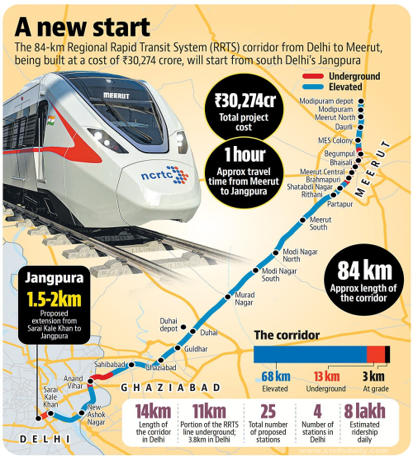
Key Facts Regarding the Regional Rapid Transit System (RRTS):
- Background:
- Formation of Task Force: In 2005, a government task force was established to develop a comprehensive transportation plan for the Delhi National Capital Region (NCR).
- Integrated Transport Plan for NCR 2032: This plan identified the need for a special rapid transit system to connect major cities within the region.
- Identified Corridors: The task force identified eight corridors, prioritising three for the "Regional Rapid Transit System" (RRTS): Delhi-Meerut, Delhi-Panipat, and Delhi-Alwar.
- About RRTS:
- New Mode of Public Transportation: RRTS is a newly designed public transportation system specifically for the NCR.
- Delhi-Meerut Corridor: This corridor is a rail-based, semi-high-speed, high-frequency commuter transit system.
- Corridor Length and Stations: The Delhi-Ghaziabad-Meerut corridor spans 82 km and includes 22 stations.
Key features of RRTS:
- High Speed & Capacity: RRTS trains will travel at speeds exceeding 160 km/h and carry a large number of passengers. High-frequency operations will have trains running every 15 minutes, reducing congestion.
- Dedicated Corridor: The trains operate on a separate, elevated track, free from road traffic congestion, ensuring reliable travel times.
- Environmental Impact: The system is expected to significantly reduce air pollution in the region by encouraging more people to use public transportation.
- Economic Growth: Improved connectivity will foster more balanced economic development across the NCR, creating opportunities in various cities and reducing reliance on a single central hub.
- Sustainable Future: RRTS serves as a model for developing efficient public transport systems in other Indian cities. It will also help reduce overall traffic congestion and emissions within the NCR.
What are the Geographical Theories associated with RRTS?
- Central Place Theory:
- This theory suggests that settlements (cities) develop around central locations that provide services to surrounding areas.
- The RRTS connects smaller towns and suburbs to major cities, allowing for easier access to jobs, education, and other services offered in the central city.
- Example: The Delhi-Meerut RRTS connects Delhi, a major economic hub, with Meerut, a developing city. This connection improves access for Meerut residents to Delhi's opportunities, including jobs, education, and various services available in the central city of Delhi
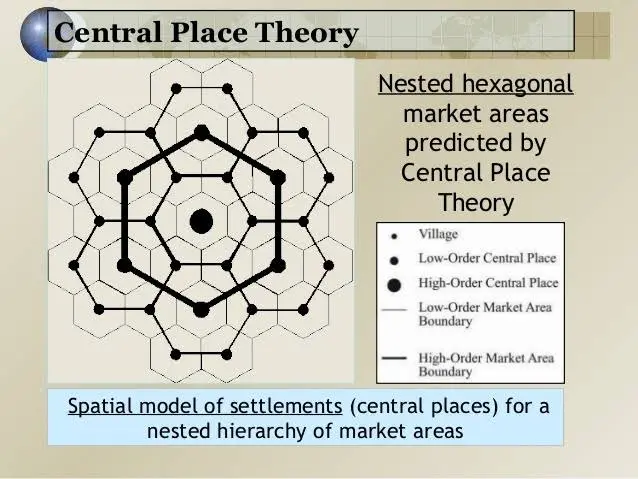
Gravity Model:
- This model suggests that the interaction between two places is influenced by their populations and the distance between them.
- RRTS enhances this by enabling faster and more frequent travel, thereby increasing the potential for economic and social interaction between connected cities. This can lead to increased trade, collaboration, and cultural exchange.
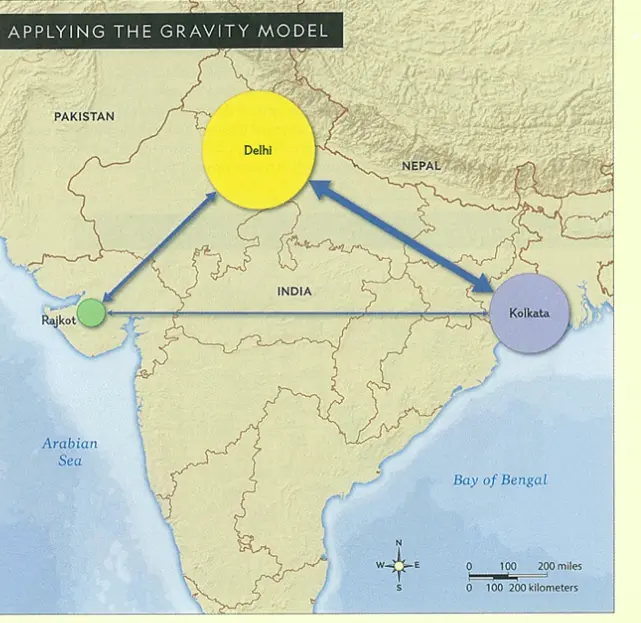
Diffusion Theory:
- This theory explains how ideas, innovations, and practices spread across space. RRTS can facilitate the spread of urban development patterns, such as shopping malls and business districts, along the train corridor.
- For example, the Delhi-Ghaziabad RRTS could lead to the development of new commercial centres in Ghaziabad, which was previously a primarily residential area.
What are India’s Initiatives for Urban Transportation?
- PM-eBus Sewa
- The Gati Shakti Terminal (GCT) policy
- National Logistics Policy (NLP)
- Bharatmala Project
- Dedicated Freight Corridors
- Smart Cities
|
UPSC Civil Services Examination, Previous Year Questions (PYQs) Prelims Q:1 With reference to the Indian economy after the 1991 economic liberalisation, consider the following statements: (2020)
Which of the statements given above is/are correct?
Ans: (b) Mains Q:1 The frequency of urban floods due to high-intensity rainfall is increasing over the years. Discussing the reasons for urban floods, highlight the mechanisms for preparedness to reduce the risk during such events. (2016) |
Highs and Lows of India–US Convergence
Why in the news ?
- Recently, the assassination attempt on a Sikh separatist in the United States (US) has become a bone of contention between India and the US.
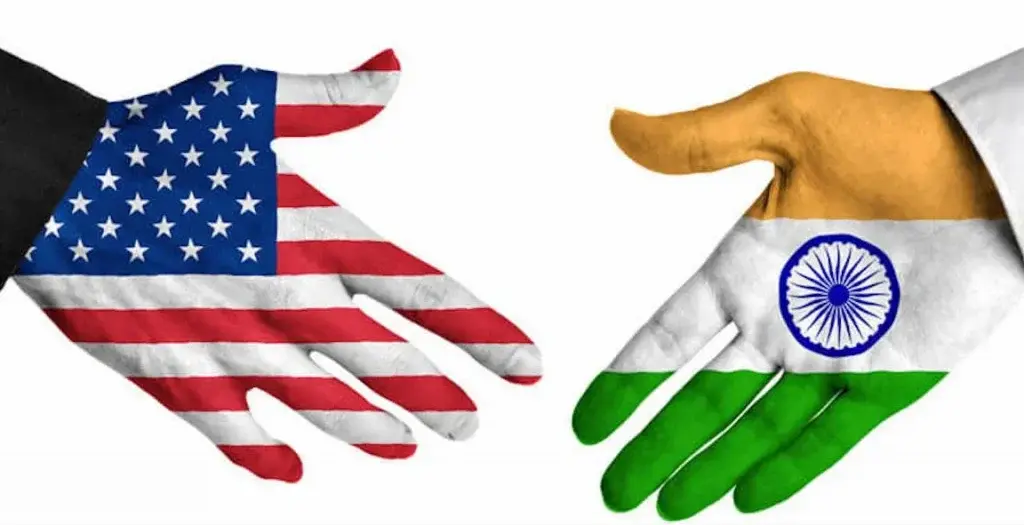
Overview of India and US Bilateral Relations:
- Economic Relations:
- In the fiscal year 2022-23, the economic relations between India and the U.S. have flourished, marking the U.S. as India's foremost trading partner.
- Bilateral trade between the two nations surged by 7.65%, reaching USD 128.55 billion, up from USD 119.5 billion in the previous fiscal year.
- Export figures to the U.S. showed a moderate increase of 2.81%, totaling USD 78.31 billion in 2022-23, compared to USD 76.18 billion in 2021-22.
- Conversely, imports from the U.S. witnessed a significant uptick of approximately 16%, soaring to USD 50.24 billion.
- International Cooperations:
- India and the United States share close cooperation across various multilateral organisations, including the United Nations, G-20, ASEAN Regional Forum, International Monetary Fund, World Bank, and World Trade Organization.
- India's tenure on the UN Security Council, commencing in 2021 for a two-year term, was warmly welcomed by the United States, which advocates for a reformed UN Security Council inclusive of India as a permanent member.
- India collaborates with the United States and ten other countries on the Indo-Pacific Economic Framework for Prosperity (IPEF).
- India's membership in the Indian Ocean Rim Association (IORA) is complemented by the United States' engagement as a dialogue partner.
- In 2021, the United States became a member of the International Solar Alliance, headquartered in India, furthering their commitment to renewable energy initiatives.
- In 2022, the United States Agency for International Development (USAID) expanded its partnership with India.
- Defence Cooperation:
- India has completed the signing of all four foundational agreements with the US:
- The Logistics Exchange Memorandum of Agreement (LEMOA) in 2016.
- The Communications Compatibility and Security Agreement (COMCASA) in 2018.
- the Basic Exchange and Cooperation Agreement for Geo-Spatial Cooperation (BECA) in 2020.
- An extension to the General Security of Military Information Agreement (GSOMIA), known as the Industrial Security Annex (ISA), was signed in 2019.
- India, which was previously unable to access US weapons during the Cold War era, has since made substantial purchases amounting to USD 20 billion over the past two decades.
- Bilateral military exercises between India and the US, such as Yuddha Abyas and Vajra Prahar, are extensive and ongoing, demonstrating the deepening defence collaboration.
- Moreover, India participates in minilateral exercises with the four partners in the Quad Forum, including the renowned Malabar exercises.
- A new grouping, I2U2, comprising India, Israel, UAE, and the US, has emerged in the Middle East, drawing comparisons to the Quad in terms of strategic significance and cooperation.
- Space and Science and Technology:
- ISRO and NASA are collaborating on the development of a microwave remote sensing satellite for Earth observation, known as the NASA-ISRO Synthetic Aperture Radar (NISAR).
- In June 2023, ISRO signed the Artemis Accords with NASA, signalling its commitment to participate in peaceful and sustainable civil exploration of outer space.
- The Innovation and Collaboration in Emerging Technologies (iCET) initiative, launched in January 2023, is a joint effort by the National Security Advisors of the US and India.
- It aims to promote cooperation and innovation in key technology domains, including AI, quantum, telecom, space, biotech, semiconductors, and defence.
Divergence in Relations:
- India's relatively restrained response to the Russian invasion of Ukraine in 2022 has caused frustration in the West, raising doubts about India's credibility as a security partner.
- India's potential contribution to US interests in an Indo-Pacific conflict, such as involving China or Taiwan, may be constrained.
- India is unlikely to become directly involved in a US-China conflict over Taiwan, preferring to avoid entanglement.
- The US desires stronger alignment from its allies against Russia, contrasting India's actions, such as increasing oil imports from Russia during the conflict.
- Defence Relations with Russia: India's procurement of weapons like the S-400 air defence system from Russia concerns the US due to its reinforcement of Russian influence.
- This acquisition also poses challenges for interoperability and secure communication between US and Indian forces, hindering the sharing of sensitive weapons technologies.
Concerns for India:
- US aid to Ukraine in the Russia-Ukraine conflict has the unintended consequence of strengthening Ukraine's defence and counter offensives, potentially increasing Russia's reliance on China for support.
- This could compromise Russia's autonomy and its ability to fulfil defence agreements with India in the event of an India-China conflict.
- The Russia-Ukraine conflict has diverted the attention of the US away from China, leading to a significant reduction in strategic alignment between India and the US.
- The ongoing conflicts in the Middle East have diverted US attention from the Indo-Pacific region, resulting in neglect towards India and the broader Indo-Pacific region.
Conclusion
- The India-US relationship has evolved significantly over the past 25 years, playing a crucial role in shaping the global order of the 21st century. However, the current state of the relationship suggests a stagnation as the strategic alignment, driven by shared concerns about China, is faltering. As the US shifts its focus towards other adversaries and India deals with its own regional challenges, their strategic convergence is diminishing.
|
UPSC Civil Services Examination, Previous Year Question (PYQ) Mains: Q:1 ‘What introduces friction into the ties between India and the United States is that Washington is still unable to find for India a position in its global strategy, which would satisfy India’s National self-esteem and ambitions’. Explain with suitable examples. (2019) |
Source: ORF
Ajrakh Craft and Bela Block Printing
Why in the News?
- Recently, Ajrakh, an ancient craft of resist-dyeing from Kutch, Gujarat, was granted a Geographical Indication (GI) tag, offering legal protection to this unique art form rooted in specific geographical origins.
Ajrakh Craft:
- Ajrakh, a block-printed textile art form, has been practised in Kutch for generations. Using natural dyes and intricate designs, Ajrakh artisans skillfully narrate stories on cotton fabric, preserving a rich cultural legacy.
- Ajrakh textiles feature a stunning array of colours, including indigo, red, and white. Traditionally, these textiles are worn by nomadic communities such as Rabaris, Maldharis, and Ahirs, symbolising their cultural identity and heritage.

Bela Block Printing:
- Bela Block Printing, another traditional craft from Kutch, shares the region's artistic heritage but remains relatively lesser-known.
- Bela Block Printing is predominantly practised by the Khatri community in Kutch. Renowned for its bold designs, vivid colour combinations, and intricate motifs like elephants and horses, this craft showcases the community's artistic prowess.
- Despite its cultural significance, Bela Block Printing faces the threat of extinction. Recognizing its vulnerability, the Office of the Development Commissioner for Handicrafts has listed it as an endangered craft, highlighting the urgent need for preservation efforts

World Wealth Report 2024
Why in the News?
- The Capgemini Research Institute’s World Wealth Report 2024 observed that the number of high-net-worth individuals (HNWI) in India increased by 12.2% in 2023 compared to 2022.
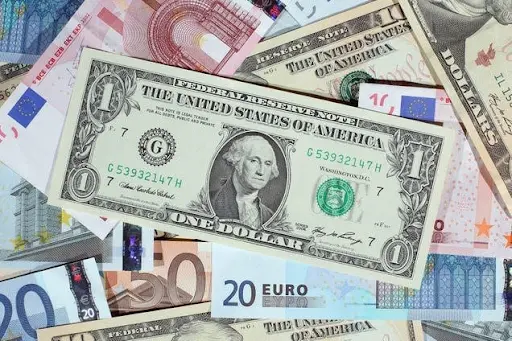
About World Wealth Report 2024:
- It is released by the Capgemini Research Institute and It covers 71 countries, accounting for more than 98% of global gross national income and 99% of world stock market capitalization.
Key Highlights Of the report:
- HNWIs are segmented into three categories based on wealth bands: Ultra-HNWIs ($30 million or more), Mid-Tier Millionaires ($5-30M) and Millionaires Next Door (USD 1-5M).
- HNWIs are individuals with investable assets of $1 million or more, excluding their primary residence, collectibles, consumables, and consumer durables.
- Global high-net-worth individuals (HNWI) wealth expanded by 4.7% in 2023, reaching $86.8 trillion. Similarly, the HNWI population increased by 5.1% to 22.8 million globally.
- HNWI in India increased by 12.2% in 2023 vs 2022, bringing the total number of HNWI population to 3.589 million.
- Among the best performers in the APAC region were India and Australia, which recorded HNWI wealth growth of 12.4% and 7.9%, and HNWI population growth of 12.2% and 7.8%, respectively.
- India’s unemployment rate decreased to 3.1% in 2023, down from 7% in 2022
- India’s country’s market capitalisation increased by 29.0% in 2023, after an increase of 6% in 2022.
- The financial wealth of India’s HNWIs increased by 12.4% in 2023 to $1,445.7 billion, compared to $ 1,286.7 billion in 2022.
- The country’s national savings as a percentage of GDP also increased to 33.4% in 2023, compared to 29.9% in 2022.
- Resurging the equity market and improving macroeconomics raised the global wealth and population of high-net-worth individuals (HNWI).
Source: (TH)
131th Year of Gandhi’s First Satyagraha
Why in the News?
- On June 7, 1893, Mahatma Gandhi initiated his first satyagraha when he was expelled from a first-class train in South Africa due to his non-white status.

Background of Gandhi’s First Satyagraha in South Africa:
- Racial Discrimination: Mahatma Gandhi faced racial discrimination in Pietermaritzburg, South Africa, where he was forcibly ejected from a first-class train compartment despite having a ticket. A European passenger insisted on his removal, citing segregation policies.
- Birth of Satyagraha: This incident marked a pivotal moment for Gandhi, sparking his resistance against racial oppression and laying the foundation for his philosophy of Satyagraha, or nonviolent resistance.
- First Satyagraha Campaign: In 1906, Gandhi initiated his first Satyagraha campaign in Johannesburg, opposing an ordinance that restricted the rights of Asians.
- Organising Civil Disobedience: Gandhi organised mass meetings and advocated civil disobedience as a means to challenge discriminatory laws and policies.
- Imprisonment and Volksrust Satyagraha: Gandhi faced multiple imprisonments for his nonviolent protests, including the notable Volkrust Satyagraha in 1913.
Gandhi’s Contributions in South Africa:
- Inspiration: Gandhi arrived in South Africa in 1893 to handle a legal case but soon became inspired to advocate for the rights of Indians in the country.
- Founding the Natal Indian Congress: In 1894, he organised the Indian community in Durban and established the Natal Indian Congress to fight for Indian voting rights.
- Legal Advocacy Against Discrimination: Through his legal practice, Gandhi confronted discrimination and racism, representing Indians and addressing their grievances in South Africa.
- Establishing the Transvaal British Indian Association: In 1903, Gandhi rallied support for Indian welfare and founded the Transvaal British Indian Association in Johannesburg.
- Engaging in Interfaith Debates: Gandhi engaged in debates with Christians who challenged his beliefs, leading him to develop a more inclusive spirituality.
|
About Satyagraha:
|
Gandhi’s Impact in South Africa:
- Mobilising the Indian Community: Gandhi's activism and leadership inspired the Indian community to oppose discriminatory laws and regulations.
- Influence on Nonviolent Resistance: His methods of nonviolent resistance and civil disobedience significantly influenced the South African Native National Congress, founded in 1912.
- Shaping the Independence Movement: Gandhi's political ideas and organising efforts played a crucial role in shaping the South African independence movement.
- Indian Relief Act Achievement: Through his activism and negotiations, Gandhi convinced the South African government to pass the Indian Relief Act in 1914.
- Abolishing Discriminatory Laws: The Indian Relief Act abolished several discriminatory laws and recognized the rights of Indians in South Africa.
- Legacy of Nonviolent Resistance: Gandhi's advocacy established a foundation for future reforms and established a precedent for nonviolent resistance against oppression.
Source: IE
The message from rural India
Context:
- After the election result ,2024 everybody is examining and applying their own interpretation to the causes behind the BJP's loss in support.
- Voters' perceptions are influenced by a variety of factors, including fears over potential changes to the constitution, societal concerns like caste or religion, economic worries like inflation and unemployment, or the party's welfare programme pledges.
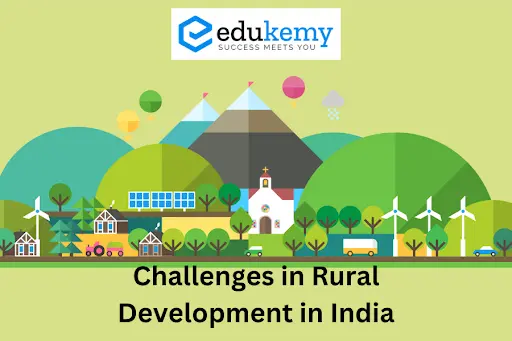
Factor responsible for BJP’s loss:
- Anti-Incumbency Factor: Voters often desire change after a party has been in power for an extended period, leading to a shift away from the ruling party .
- Economic Issues: Rising unemployment, inflation, and economic inequality could have led to voter dissatisfaction .
- Agricultural Distress: Persistent issues like low crop prices, high input costs, and inadequate government support may have alienated rural voters .
- Social Issues: Increased polarisation, communal tensions, and perceived erosion of secularism might have contributed to the loss of support from diverse voter bases .
- Alliance Dynamics: Effective coalition strategies and alliances by opposition parties could have fragmented the BJP’s vote base.
- Leadership Fatigue: Voter fatigue with the existing leadership and a desire for new faces and perspectives may have played a role .
- Campaign Strategy: Ineffective or miscalculated campaign strategies, failing to address voter concerns and adapting to the political climate, might have contributed to the defeat .
Rural India's Economic Challenges to Central govt.
- Low income: Almost two-thirds of India's population lives in rural areas, with a monthly spend of Rs 3,773 per person (NSO 2022-23). This equates to an average family income of approximately Rs 20,000 per month.
- pay stagnation: During the Modi government's second term, actual pay growth in rural areas has slowed or dropped.
- Uneven income distribution: Income levels vary throughout rural areas, with agricultural households earning even less than the average.
- Government initiatives: The Modi administration has developed plans for rural development, such as toilets, houses, water supply, roads, and power.
- Limited impact: Despite these attempts, rural income levels are still low, indicating a failing rural economy.
Challenges in Indian Agriculture
- Slow growth: According to the most recent forecasts, agricultural GDP growth in 2023-24 (FY24) was only 1.4%.
- Lagging behind the broader economy: This slow growth contrasts with the total GDP growth of 8.2% in FY24.
- Slow growth has a huge impact on workers' well-being, as 45.8% of the workforce is employed in agriculture.
- Limited effectiveness of free food programmes: While providing free grains provides short alleviation, it does not address the need for significant economic increase.
What could be the way forward for political parties?
- A massive program for rural needed:
- There are too many individuals who rely on agriculture.
- They must transition to more productive, non-farm jobs.
- This could take place in rural areas to create rural infrastructure or outside of the rural economy to build urban India.
- It would necessitate huge investments in skill development for higher-value occupations.
- The industry must chip in to prepare people for meaningful work.
- A robust strategy for high value farm production:
- Within agriculture, the emphasis should shift from basic commodities, particularly rice, which is abundant, to high-value crops such as poultry, fishery, dairy, and fruits and vegetables.
- Because high-value agriculture is perishable, it needs rapid logistics in a value chain strategy, similar to the AMUL concept for milk.
- The incoming government must develop a strong plan for this.
- Invest on climate smart agriculture:
- Given the growing number of climate change-induced extreme weather events (heat waves or flash floods), India must invest heavily in climate-smart agriculture, including ag voltaic — solar as a third "crop" for farmers that can provide a consistent monthly income even when other crops fail due to drought or flooding.
Conclusion:
Hence, The political parties will evaluate their performance in the recently finished election. Rural suffering has determined the success and failure of political parties. The administration and opposition must learn that rural communities want more than simply 'freebies'. Keeping this in mind, the government must implement significant changes in agriculture, raise agricultural incomes, and adjust priorities.
|
UPSC Civil Services Examination Previous Year’s Question (PYQs) Prelims: Q:1 The Multi-dimensional Poverty Index developed by Oxford Poverty and Human Development Initiative with UNDP support covers which of the following? (2012)
Select the correct answer using the codes given below:
Ans: (a) Mains Q:1 Despite Consistent experience of high growth, India still goes with the lowest indicators of human development. Examine the issues that make balanced and inclusive development elusive. (2016) |
Source: IE
Share the article
Edukemy’s Current Affairs Quiz is published with multiple choice questions for UPSC exams
MCQ
Get Latest Updates on Offers, Event dates, and free Mentorship sessions.

Get in touch with our Expert Academic Counsellors 👋
FAQs
UPSC Daily Current Affairs focuses on learning current events on a daily basis. An aspirant needs to study regular and updated information about current events, news, and relevant topics that are important for UPSC aspirants. It covers national and international affairs, government policies, socio-economic issues, science and technology advancements, and more.
UPSC Daily Current Affairs provides aspirants with a concise and comprehensive overview of the latest happenings and developments across various fields. It helps aspirants stay updated with current affairs and provides them with valuable insights and analysis, which are essential for answering questions in the UPSC examinations. It enhances their knowledge, analytical skills, and ability to connect current affairs with the UPSC syllabus.
UPSC Daily Current Affairs covers a wide range of topics, including politics, economics, science and technology, environment, social issues, governance, international relations, and more. It offers news summaries, in-depth analyses, editorials, opinion pieces, and relevant study materials. It also provides practice questions and quizzes to help aspirants test their understanding of current affairs.
Edukemy's UPSC Daily Current Affairs can be accessed through:
- UPSC Daily Current Affairs can be accessed through Current Affairs tab at the top of the Main Page of Edukemy.
- Edukemy Mobile app: The Daily Current Affairs can also be access through Edukemy Mobile App.
- Social media: Follow Edukemy’s official social media accounts or pages that provide UPSC Daily Current Affairs updates, including Facebook, Twitter, or Telegram channels.



